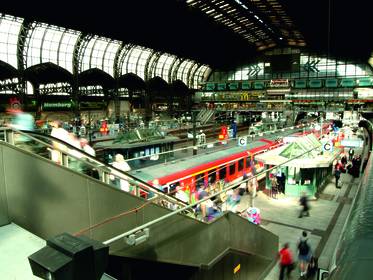3D-Coverage: The easy solution for your planning
How can you plan your signaling system easier and more reliable?
Our smart 3D-Coverage method makes it possible to identify and document the optimal and safe signaling solution for customers and users.
In a nutshell, a 3-dimensional space is determined based on the product parameters of the signaling device and the environmental conditions, in which the signaling device exactly fulfills the project requirement of the customer application.
For the evaluation of audible signaling devices, the tone/frequency range used, the noise situation, as well as the distance to be maintained to the volume of the noise play a role. For visual signaling devices, minimum illuminance levels are determined considering the operating modes, technology, and visual perceptibility.
Based on these factors, the 3-dimensional signaling range is determined as DIGITAL TWIN of the device performance under the given general conditions.
When sufficient data is missing
Imagine you want to paint a room and you go to the DIY store to buy wall paint. You ask yourself: "How many liters do I need?" You see that paint buckets of the same size from different manufacturers have price differences. Furthermore, you fear that you will either buy too little paint and have to go back to the DIY store, or too much, leaving half.
In this scenario, you opt for an cheap paint bucket. However, when you get home, you find that you have to paint over the same areas several times because the opacity is not strong enough to cover the old paint.
So the amount you bought will not be enough and you will have to buy another paint bucket. If you had bought the supposedly more expensive paint bucket with better opacity, you would not only have saved money in the end, but you would also have finished your project faster.
Everyone knows these problems and for everyone the solution is so obvious. Sufficient data and supportive advice would have led to immediate success. The same scenario can be found in the design of signal technology.
Why is the 3-dimensional signaling range crucial?
For a design of visual and audible signaling devices that only uses the product parameters from marketing data sheets, no reliable project planning is possible without further empirical values.
The values contained are usually not suitable for this purpose, as each device has individual performance depending on sound, frequency, light colour, measuring angle, etc.
Furthermore, environmental conditions and requirements must be taken into account when determining the signaling range.
Any planning based on insufficient performance data leads to great risks, not only financially but also in terms of danger to life!
PA X-20-15 – Size of visual coverage (A x B x C in meter)
| Indicate | Warning | Alert | |
|---|---|---|---|
| red | |||
| yellow | |||
| amber | |||
| blue | |||
| clear |
The figures shown are mainly for a quick orientation. For an individual and precise interpretation please use Pfannenberg Sizing Software (PSS).
What does Pfannenberg offer?
What do we offer that the customer can use independently?
- Detailed technical documentation with all performance parameters (3D coverage) of all signaling devices
- Supporting technical and commercial planning tools such as PSS, 3D-Coverage Calculation Tool, planning tools, Revit BIM files
- Webinars and eLearning platforms for on-demand use
- Know-How - pages and white papers on various topics
What do we offer as active support / active service?
- Active planning / project support
- Consulting based on international standards in relation to the respective application
- Documentation to prove the compliant design
What do we offer for a fee?
- Inventory and complete design
- On-site consultation by experts





